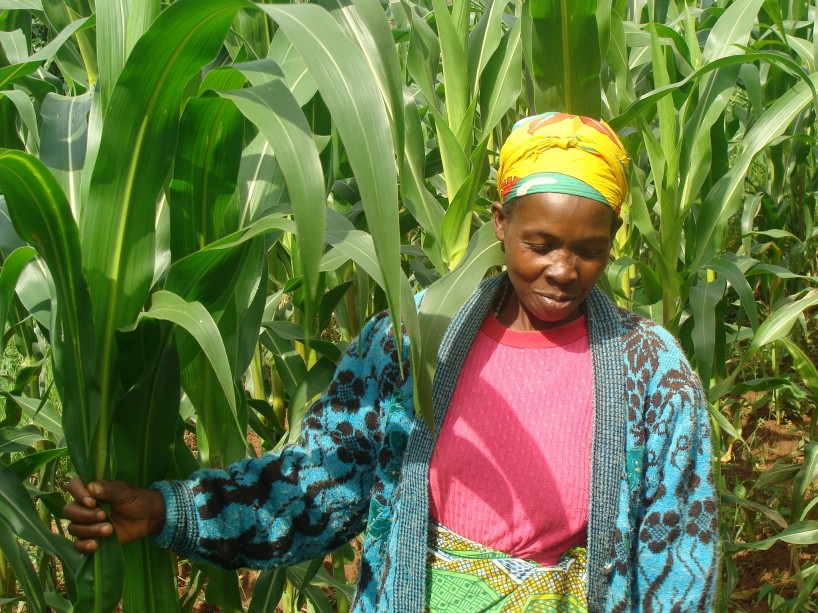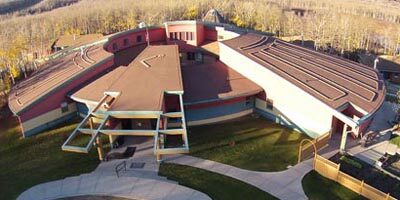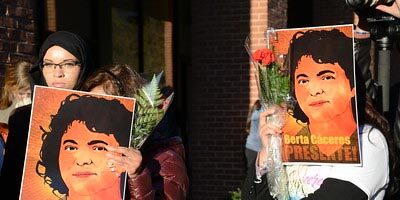The global food crisis, and thinking beyond two dimensional farming

Farming in Rwanda. The UN Food and Agriculture Organization says that global food security will be uncertain for the next two years if wheat and maize production do not rise substantially. Wheat and maize prices have shot past their 2009 highs, cereal stocks have declined by 7%, and food import costs could surpass one trillion US dollars this year. Photo courtesy of the World Agroforestry Centre.
75% of the world’s poor live in rural areas and are involved in farming. Proponents of agroforestry – an indigenous farming technique – believe it is an affordable way to improve food security for individual farmers without creating dependency on large corporations for farming inputs.
Now finding its way into more development strategists’ toolkits, agroforestry can increase crop yields and livestock health on farms sustainably and inexpensively. It could make it easier for impoverished farmers in the third world to improve their livelihoods, gain food security, health benefits and increased incomes.
Agroforestry involves deliberately incorporating trees and shrubs into fields of other “low or medium-storey” crops. Certain types of trees replenish soil, while others produce fruit or animal fodder (coarse food for livestock composed of entire plants).
“The abundance of nature, when humans know how to work with it, is free and very low labour-input, compared with the kind of slavery that we create for ourselves through agriculture,” said Douglas Jack, project coordinator of the Sustainable Development Corporation.
His organization encourages the developed world to increase its own food production capacity through indigenous agroforestry models. According to Jack, most indigenous populations in Canada and around the world used natural agroforestry systems until the spread of colonialism and an emphasis on forest-clearing and monocropping.
Farmers practicing agroforestry have more control over the types of crops they grow, allowing them to better respond to changes in commodity prices. Planting trees allows crop diversification, reducing farmers’ dependency on volatile international markets.
Producing many kinds of crops produces a “buffering effect.” When the price of one good decreases, a farmer still has other crops for income, reducing dependency on a particular commodity. Diversification is a risk-management strategy that ensures that, even when some markets are unfavourable, farmers do not go hungry and do not fall back into poverty.
Jack hopes that communities around the world will regain their agroforestry food capacities, and agricultural trade relationships between first and third world countries will become less exploitative and extractive.
“As long as we’re dependent on other societies, we don’t have a sustainable earth” he said, hoping that the wealthy countries will “get off the backs of the third world.”
The future of forest farms
Dennis Garrity, director general of the World Agroforestry Centre in Nairobi, has no doubt that agroforestry will soon be the normal system of agriculture, replacing traditional systems that rely on clearing trees and monocropping. International organizations and national governments are now recognizing the importance of agroforestry in targeting the most impoverished rural farmers, he says.
Garrity thinks that the World Bank was slow to recognize the potential of this system of agriculture, but that it now “understands the value of agroforestry as a means of investment. And country governments are becoming more receptive to investments in agroforestry as well.”
Prior to 2002, the World Bank barely invested in agroforestry at all, ignoring numerous opportunities to help the low-income communities that would have benefited from this system of farming. Then the Bank revised its policy to focus on the role of forests in poverty alleviation and economic growth.
John Spears, a World Bank forest policy consultant, says that the Bank is now aware of the benefits of agroforestry to low-income and impoverished people,
“The primary purpose of the Bank is to address poverty alleviation and to raise incomes. I think if some of these projects we’re talking about come to fruition, the primary beneficiaries will be low-income people and indigenous people who depend on forests.” Spears feels that, at this point, agroforestry still has enormous untapped potential. “Frankly, very little has been done in the agroforestry field,” he said. “I suspect that there are a lot of opportunities for the Bank if it uses its influence in the right way.”
The biggest barrier to full implementation of agroforestry policies is national governments.
“One of the reasons why agroforestry hasn’t taken off is because it falls between the cracks,” Spears said. “It’s not pure forestry and it’s not pure agriculture. So, at the national level, there’s often a very weak capacity for pulling these ideas together and making them work.”
And the private sector has little incentive to provide seedlings to farmers. Agroforestry technologies are cheap. Instead, the public sector needs to be a major player in distributing agroforestry technology on a large scale.
“The big challenge here is that public sector institutions are not stepping up with the investment levels that are minimally required to get the technologies out to farmers and stimulate the demand,” Garrity says.
International experts are trying to address some of the problems of underinvestment in agroforestry. On the agenda of the June 2010 meeting of the Committee on Agriculture, for example, were two surveys conducted by the World Bank – one on how agroforestry benefits the rural poor in Mozambique and Southern Africa and another on the investment opportunities in agroforestry.
Canada has played a key role in the promotion of agroforestry, and in fact spearheaded the creation of the World Agroforestry Centre in the mid 1970s. The Centre continues to receive funding each year from the Canadian International Development Agency (CIDA).
Both in Canada and around the world, agroforestry systems have the potential to combat hunger and poverty, improving the health and well-being of rural farmers. The World Bank hopes to see one billion low-income people benefitting from farm forestry by 2050.






